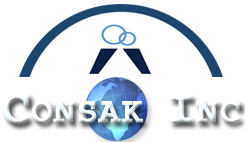Course Length: 15 hours
PDUs:
Technical: 7
Leadership: 7
Strategic: 0
Prerequisites:
Two years of experience working on an agile team in a leadership role, like DA scrum master, scrum master, product owner, architecture owner, etc.
Course Description:
Do you want to take Disciplined Agile to a new level? Are you looking for tools to solve complex problems and enhance your organization’s agility? Do you want to learn how to lead your team to excellence?
Expand your knowledge and build practical skills around Disciplined Agile, business agility, leadership, and team development.
Disciplined Agile Senior Scrum Master is a nine lesson, instructor-led course that shows you how to use the Disciplined Agile tool kit to solve a variety of advanced problems, work with allies within your organization, and optimize how teams work. You will gain knowledge in planning, reporting, and metrics, and coordinating activities, as well as how to meet challenges in these areas. And you’ll develop the skills you need to foster emotional intelligence, resolve conflicts, and lead high-performance teams at any stage of development.
Filled with activities, supplemental reading, and more, this course will prepare you to take the Disciplined Agile Senior Scrum Master (DASSM) exam and, equally important, start using Disciplined Agile immediately within your leadership role.
LEARNING OBJECTIVES:
After the completion of this course, you will be able to:
- Describe the roles and responsibilities of DASSM.
- Describe the Tuckman Team Development Model (Tuckman, 1965).
- Practice a team development activity for the forming stage.
- Practice a team development activity for the storming stage.
- Practice a team development activity for the norming stage.
- Practice a team development activity for the performing stage.
- Solve problems by identifying teams at various stages of development.
- Identify and describe various methods of Team decision making.
- Define emotional intelligence and explain why it is essential to team performance.
- Explain how to achieve each component of resilience and outlook.
- Explain how to achieve each component of emotional intelligence “with self.”
- Explain how to achieve each component of emotional intelligence “with others.”
- Explain why business agility is important to an organization’s viability.
- Describe how other business areas such as finance, legal, marketing, sales, and procurement can contribute to an organization’s overall business agility.
- Use the spider chart to identify and analyze tactical scaling factors in more complex situations.
- Describe the scope and purpose of the Disciplined DevOps layer.
- Use the DA tool kit to optimize how the team works with the Disciplined DevOps layer.
- Use the DA tool kit to identify and help resolve challenges that teams face in the Disciplined DevOps layer.
- Explain how to optimize delivery with the “test first” method as it relates to the quality of requirements.
- Describe what the criteria for “done” might look like.
- Describe the scope and purpose of the value stream layer.
- Use the DA tool kit to optimize how teams work with the value stream layer.
- Use the DA tool kit to identify and help resolve challenges that the delivery teams face in the value stream layer.
- Explain the purpose of the Coordinate Activities process goal and why it is important.
- Explain how to improve the value creation structure of teams.
- Use the DA tool kit to optimize the flow of work and solve challenges related to coordinating and collaborating across teams, or within a larger team of teams.
- List examples of when conflict can be healthy within an individual and within a group.
- Explain the Thomas-Kilmann Conflict Resolution Model and its components relative to concern for self and concern for others.
- Demonstrate how to use healthy and unhealthy language to solve a conflict.
- Identify the DA role responsible for planning.
- Describe the concept of sufficient planning.
- List and define the five levels of scope and who focuses on each.
- Explain how to implement just-in-time planning using a Gantt chart.
- Identify how your team can improve planning using two goal diagrams: Release Planning and Produce a Potentially Consumable Product (Plan Your Work decision point).
- Explain how to accurately forecast release dates and costs.
- Explain the difference between an MVP and an MBI.
- Explain how teams approach metrics.
- Explain how organizations approach metrics.
- Explain what types of measurement work and do not work.
- Explain how to choose and design specific metrics to measure improvements against areas related to team performance that need improvement (GQM, OKRs).
- Demonstrate how to solve a measurement problem using the Govern Delivery Team goal
Schedule
Evening/Morning//Weekend classes as applicable.
Course Schedule
| Course | Start Date | End Date | Course Fee ($) | Exam Fee (USD) | Exam Info | Requirements |
|---|---|---|---|---|---|---|
| Saturday Feb 18, 2023
9 AM-5 PM (EST/UTC-5) |
Sunday Feb 19, 2023
9 AM-5 PM (EST/UTC-5) |
Special Discounted Offer
US$ 1,200 |
First Attempt Included in Course Fee | Online Exam by Pearson Vue | DASM
or PMI-ACP or Any prior Agile Experience / Certification |
